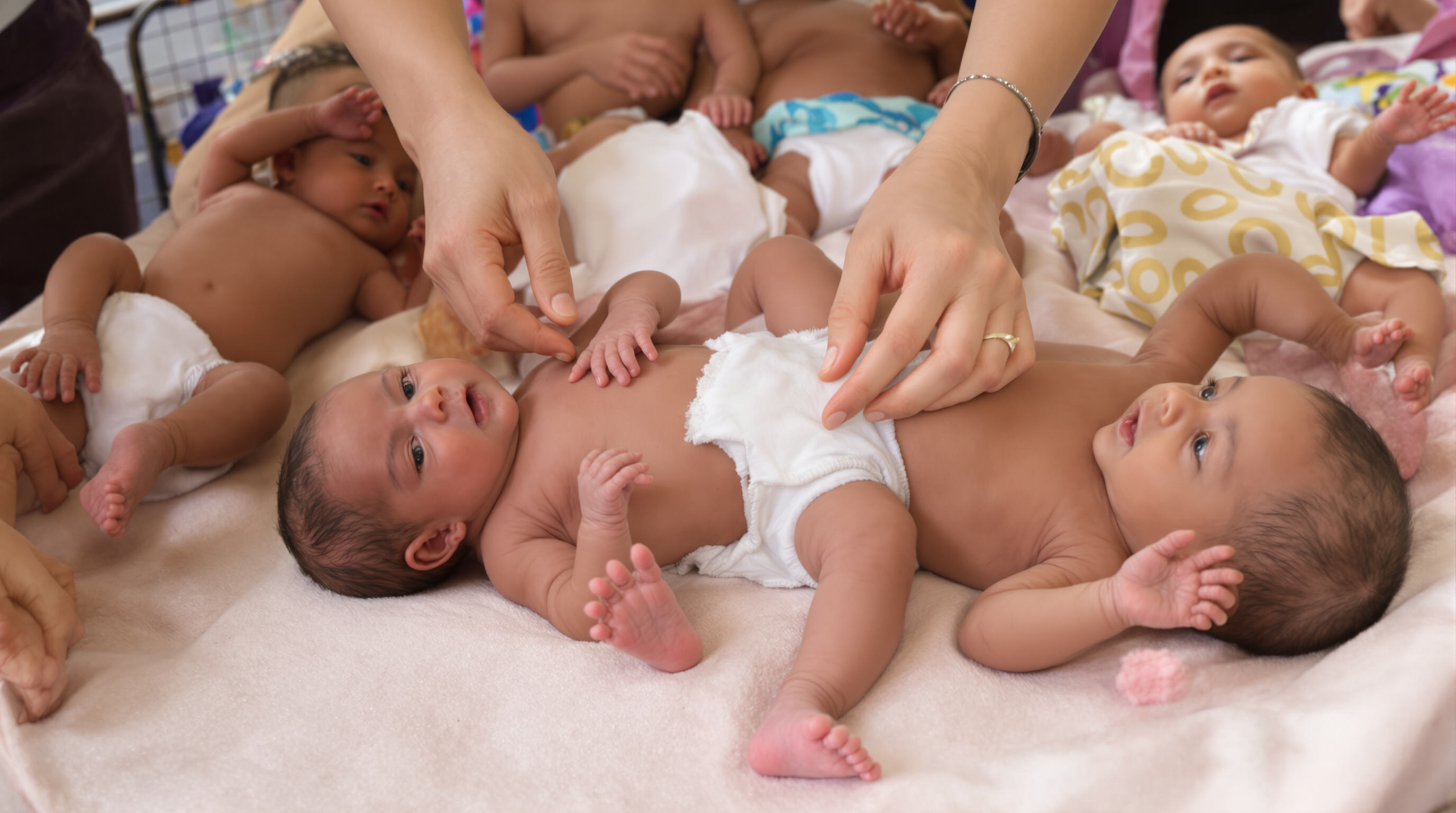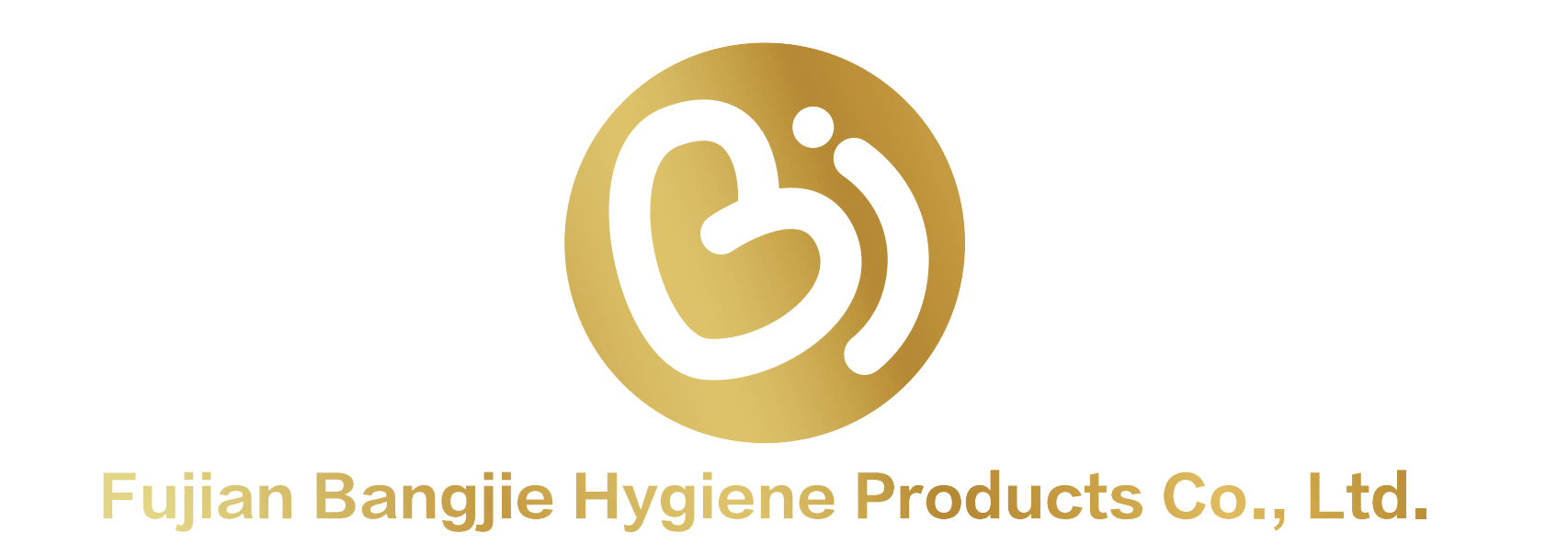လက်တင်အမေရိကတွင် ကိုယ်ပိုင်တံဆိပ် ကလေးမွေးမြူရေး အဝတ်အစားများအတွက် အရွယ်အစား မက်ထရစ် အကြံပြုချက်များ
လက်တင်အမေရိကတွင် ဒေသတွင်းစျေးကွက်ကြီးထွားမှုနှင့် ကိုယ်ပိုင်တံဆိပ် ဆီးစားများအတွက် တောင်းဆိုမှုမြင့်တက်လာခြင်း

၎င်း ကလေးအနှီး လက်တင်အမေရိကတွင် ဈေးကွက်မှာ ယနေ့ခေတ်အားဖြင့် အမှန်တကယ် တိုးတက်လျက်ရှိပါသည်။ Market.us ၏ ၂၀၂၅ ခုနှစ်အချက်အလက်များအရ ၂၀၂၂ ခုနှစ်ကတည်းက ပရိဘောဂအမှတ်တံဆိပ်များ၏ ဝေစပ်မှုမှာ ၁၄.၂ ရာခိုင်နှုန်းခန့် တိုးတက်ခဲ့ပါသည်။ ဘရာဇီးမှာ ဤနေရာတွင် အဓိကကစားသမားအဖြစ် ထင်ရှားပြီး နောက်တင်မက်က္ကဆီကိုနှင့် အာဂျင်တီးနားတို့က လူတို့သည် ပိုမိုသောငွေရှိလာပြီး ဆိုင်များမှာ ပိုမိုကောင်းမွန်လာသည်။ မိဘများအများစုမှာ စျေးနှုန်းများကို ဂရုတစိုက်ထားပြီး သူတို့ကလေးများအတွက် အရည်အသွေးကောင်းများကို လိုလားကြပါသည်။ ဤအချက်မှာ ဒေသတွင်းလိုအပ်ချက်များအတွက် အဆင်ပြေစေရန် အမှတ်တံဆိပ်များအတွက် အခွင့်အရေးဖွင့်ပေးလိုက်ပါသည်။ ဒေသတွင်းရှိ ဆိုင်များမှာလည်း အားကစားနေပါသည်။ ထိုမှတစ်ဆင့် အပ်ပေါ်သော အနားယူသော အမှတ်တံဆိပ်များကို လျော့နည်းစေပါသည်။ ဤဆိုင်များတွင် အမှတ်တံဆိပ်များအတွက် အဝတ်အစားများမှာ တိုက်ရိုက်အားဖြင့် ၃၈% ခန့်ရှိနေပါသည်။
ကလေးအဝတ်အစားများ စားသုံးမှုကို လှုံ့ဆော်နေသော အဓိက လူဦးရေဆိုင်ရာ အားကောင်းများ
လက်တင်အမေရိကတွင် ၂၀၂၃ ခုနှစ်တွင် တစ်ထောင်လျှင် ၁၇.၃ ဖွားမြင်နှုန်းနှင့် မြို့ပြနေရာများတွင် မြန်မြန်နှုန်းဖြင့် ဖွံ့ဖြိုးတိုးတက်မှုတို့သည် ဒိုးလာဝတ်ဆောင်းများအား တောင့်တောင်းမှုကို တိုက်ရိုက်မြှင့်တင်ပေးနေပါသည်။ ယခုအချိန်တွင် မြို့ပြမိသားစုများ၏ ၄၃% က ဝင်ငွေနှစ်မျိုးရရှိသော မိသားစုများဖြစ်ပြီး အဆင်ပြေသော၊ စွန့်ပစ်နိုင်သော ဖြေရှင်းချက်များကို နှစ်သက်ကြပါသည်။ ကလေးငယ်များ၏ကျန်းမာရေးကို တိုးတက်စေရန် အစိုးရ၏ စီမံကိန်းများသည် မူလတန်းထုတ်ကုန်များအား သတိပြုမိမှုကို တိုးမြှင့်ပေးခဲ့ပြီး ၂၀၂၁ မှ ၂၀၂၃ ကာလအတွင်း ကျေးလက်ဒေသများတွင် ဒိုးလာဝတ်ဆောင်းများ အသုံးပြုမှုသည် ၂၂% တိုးတက်ခဲ့ပါသည်။
မှတ်တိုင်အမှတ်တံဆိပ်နှင့် ကုမ္ပဏီအမှတ်တံဆိပ် ဒိုးလာဝတ်ဆောင်းများ ယှဉ်ပြိုင်မှုနှင့် စျေးဝယ်ဆိုင်များတွင် ရောင်းချသည့် လမ်းကြောင်းများ ချဲ့ထုတ်မှု
လက်တင်အမေရိကနိုင်ငံ၏ အဝတ်လျှော်စက်ဈေးကွက်၏ ၃၄% ခန့်ကို ပိုင်ဆိုင်ထားပြီး စုစုပေါင်း ဒေါ်လာ ၃.၇ ဘီလီယံခန့်ရှိသည်။ ဒီထုတ်ကုန်တွေဟာ အလားတူ အရည်အသွေးရှိပေမဲ့ နာမည်ကြီး နိုင်ငံတကာ တံဆိပ်တွေထက် ၁၈ ကနေ ၂၅ ရာခိုင်နှုန်း စျေးသက်သာပါတယ်။ ဒီတိုးတက်မှုကို အွန်လိုင်းမှာ အော်ဒါဖြည့်ဆည်းရေး စနစ်တွေနဲ့ အစဉ်အလာ စူပါမားကက် အရောင်းတွေကို ရောစပ်တဲ့ ဆိုင်တွေသုံးတဲ့ လက်လီရောင်းချမှု နည်းသစ်တွေက တွန်းအားပေးထားပါတယ်။ ဒီပေါင်းစပ်ပုံစံက ကိုယ်ပိုင်တံဆိပ်တံဆိပ်တွေကို ဒေသအနှံ့က မြို့ငယ်တွေနဲ့ ဒုတိယမြို့တွေမှာရှိတဲ့ ဖောက်သည်တွေကို ရောက်ရှိခွင့်ပေးတယ်။ မကြာသေးခင်က ကပ်ခွာတဲ့ တံဆိပ်တွေပေါ်က ဖြစ်စဉ်တွေကို ကြည့်လိုက်ရင် စိတ်ဝင်စားစရာတစ်ခုခုလည်း တွေ့ရပါတယ်။ ကုန်သည်တွေဟာ ဆိုင်စင်တွေမှာ အမြင်ပိုင်း ဆွဲဆောင်မှု မပျောက်စေပဲ သူတို့ရဲ့ ထုတ်ကုန်အိတ်တွေကို ရိုးရှင်းအောင် လုပ်ဖို့ နည်းလမ်းတွေ ရှာဖွေနေပါတယ်။ ဒီပြောင်းလဲမှုတွေက ကမ္ဘာ့အကြီးမားဆုံး ကုမ္ပဏီတွေနဲ့ ယှဉ်ပြိုင်ဖို့ ကြိုးစားနေတဲ့ ဒေသတွင်းထုတ်လုပ်သူတွေအတွက် ပို့ဆောင်ရေးကုန်ကျစရိတ်ကို သိသိသာသာ လျှော့ချပေးပါတယ်။
ပေါ်ပေါက်လာသော လက်လီနှင့် အီးကွန်ရက်ကုန်သွယ်ရေးလမ်းကြောင်းများတွင် ပုဂ္ဂလိကတံဆိပ်များဖြင့် ထုတ်လုပ်သော ကလေးအဝတ်လျှော်စက်များ တိုးပွားလာ
လက်တင်အမေရိကတွင် ပုဂ္ဂလိက တံဆိပ်များ၏ အောင်မြင်မှုကို ပုံသွင်းပေးနေသော ဈေးကွက်ဝင်ရောက်မှု မဟာဗျူဟာများ
ကုန်အမှတ်တံဆိပ် ပုံစံဖြင့် ထုတ်လုပ်သည့် ဒိုင်ပါကုမ္ပဏီများသည် စျေးကွက်များကို ချဉ်းကပ်ရာတွင် ဖန်တီးမှုများစွာ ပြုလုပ်နေကြသည်။ မြို့များတွင် နေထိုင်သည့် စားသုံးသူများ သို့မဟုတ် ကမ်းလှမ်းသည့် စားသုံးသူများအတွက် စျေးနှုန်းအဆင့်အတန်းများကို အသုံးပြုရန် စတင်ခဲ့ပါသည်။ အချို့က ဒေသခံ ဖြန့်ဖြူးသူများနှင့် နီးကပ်စွာ ပူးပေါင်းပြီး သယ်ယူပို့ဆောင်ရေးစရိတ်များကို လျော့နည်းစေရန် ကူညီပေးသည်။ ကုန်ပစ္စည်းထုပ်ပိုးမှုသည် ကုန်အမှတ်တံဆိပ်များ ပြောင်းလဲနေသည့် နောက်ထပ်နေရာတစ်ခုဖြစ်သည်။ ဥပမာအားဖြင့် မက္ကစီကိုစီးတီ သို့မဟုတ် ဘူနက်စ်အေးရှ်တွင် မိဘများသည် စပိန်နှင့်အင်္ဂလိပ်ဘာသာစကားနှစ်မျိုးစလုံးတွင် အချက်အလက်များကို လိုအပ်နိုင်သောကြောင့် နှစ်ခုမှ ဘာသာစကားများကို ပြောင်းလဲသော ဓာတ်ဆီကို အများအပြားထည့်သွင်းထားပါသည်။ အစိမ်းရောင်ကိုလည်း မမေ့ပါနှင့်။ ကလေးကုန်ပစ္စည်းများရောင်းရေးသည် အစိမ်းရောင်ရွေးချယ်စရာများကို ရှာဖွေနေသည့် ဒေသများတွင် နှစ်စဉ် ၆၀% ခန့်တိုးတက်မှုရရှိနေသောကြောင့် ထုတ်လုပ်သူများသည် ၎င်းတို့၏ ပုံစံများတွင် အပင်မှထုတ်လုပ်သည့် ပစ္စည်းများနှင့် ပြန်လည်ဖျက်စီးနိုင်သည့် အစိတ်အပိုင်းများကို ထည့်သွင်းနေကြသည်။ ဤရွှေ့ပြောင်းမှုသည် ပတ်ဝန်းကျင်အတွက်သာမက စီးပွားရေးအရလည်း အဓိပ္ပာယ်ရပါသည်။
စူပါမားကတ်နှင့် အီးကော်မာ့စ် စျေးကွက်ဝင်ရောက်မှုသည် ကလေးဒိုင်ပါစျေးကွက်ကို မြန်ဆန်စေသည်
လက်တင်အမေရိကတွင် စျေးကြီးများက ၂၀၂၄ ခုနှစ်အတွက် Market.us ၏အချက်အလက်များအရ ကလေးဆီးစားအဝတ်အထည်များ ရောင်းချမှု၏ ၃၆.၂ ရာခိုင်နှုန်းခန့်ကို တာဝန်ယူပါသည်။ ထုထည်ဝယ်ယူမှုလျှော့စျေးများနှင့် ဆိုင်တွင်း မှတ်တိုင်များ ရောင်းချနေသည့်နေရာများကို ကြည့်ပါက ဤသို့အားကောင်းမှုမှာ အကြောင်းပြချက်ရှိပါသည်။ အီးကောမာစ်လည်း အလျင်အမြန်တိုးတက်နေပြီး နှစ်စဉ်တိုးတက်မှုနှုန်းမှာ ၂၄ ရာခိုင်နှုန်းအထိရှိနေပါသည်။ ဝန်ဆောင်မှုများအား စာချုပ်သက်တမ်းဆက်သည့် ဝန်ဆောင်မှုများမှာ ကလေးဆီးစားအဝတ်အထည်များကို အွန်လိုင်းမှတဆင့် ဝယ်ယူမှု၏ ၁၈ ရာခိုင်နှုန်းခန့်ကို ဖြစ်စေပါသည်။ အဘယ်ကြောင့်နည်းဟု မေးပါက ကိုလံဘီယာနှင့် ပီရူးကဲ့သို့နေရာများတွင် လူများ၏ ၇၀ ရာခိုင်နှုန်းကျော်က ယနေ့ခေတ်စမတ်ဖုန်းများ ပိုင်ဆိုင်နေပါပြီ။ ဉာဏ်ကောင်းသော အရောင်းဆိုင်များက တစ်ခုတည်းသော လမ်းကြောင်းကိုသာ မကပ်စားတော့ပါ။ အများအားဖြင့် ဆိုင်များက ကလေးဆီးစားအဝတ်အထည်များကို ဝယ်ယူသည့်အခါတွင် ဒစ်ဂျစ်တယ်ဆုလာဘ်များနှင့် ဆက်စပ်နိုင်ရန် ဆိုင်ရာကလေးဆီးစားအဝတ်အထည်များ၏ ပက်ကေ့ခ်ျများတွင်ပင် QR ကုဒ်များကို ထည့်သွင်းထားပါသည်။ ကုဒ်များကိုစကန်လုပ်လိုက်ပါက ဖောက်သည်များသည် ဆုလာဘ်များနှင့် အထူးအခွင့်အရေးများကို အိုင်းလိုင်းတွင် ရယူနိုင်မည်ဖြစ်ပါသည်။
အမှုလေ့လာမှု- ဘရာဇီးရှိ အမှတ်တံဆိပ်ဆိုင်ရာ ကလေးဆီးစားအဝတ်အထည်များ စတင်မိတ်ဆက်ခြင်း
ဘရာဇီးနိုင်ငံမှ ဦးဆောင်သော အမှုသုံးကုန်စျေးရောင်းသူတစ်ဦးသည် ၎င်း၏ ကိုယ်ပိုင်တံဆိပ် ဆေးပြားစျေးနှုန်းများကို နှစ်ခုလုံးတွင် ၂၂% တိုးမြှားစေရန် အပိုင်းသုံးပိုင်းဖြင့် ရှိသော နည်းဗျူဟာကို အသုံးပြုခဲ့သည်-
- ခန္တာကိုယ်တည့်မျဉ်းညွှန်ကိန်းများ - အများအားဖြင့် တိုင်းပြည်၏ ပျမ်းမျှထက် ၁၂% ပိုမိုလေးသော အနောက်မြောက်ဘရာဇီးလူမျိုးများအတွက် အရွယ်အစားပြင်ဆင်ထားခြင်း
- လျင်မြန်သော စတော့ရှယ်ယာ - AI မှ ခန့်မှန်းထားသော ကြော်ငြာမှုသည် ဆိုင် ၁၂၀၀ တွင် ၉၈% အတွင်း စတော့ရှယ်ယာကို ထိန်းသိမ်းထားသည်
-
စျေးနှုန်းများကို အုပ်စုဖွဲ့ပေးခြင်း - ဆပ်ပြာများနှင့်တွဲလျက် ပက်ကေ့ခ်များသည် ပျမ်းမျှ ဝယ်ယူမှုအား $၇.၄၀ ဖြင့် တိုးမြှားစေခဲ့သည်
ဤချဉ်းကပ်မှုသည် ပုံစံနှင့် ပတ်သက်သော ပြန်လည်ရရှိမှုကို ၃၁% လျော့နည်းစေပြီး ၈၉% ထပ်မံဝယ်ယူမှုနှုန်းကို ရရှိခဲ့သည် (Yahoo Finance 2024)။
ဒေသအလိုက် ကိုယ်တိုင်ပြင်ဆင်ထားသော ကလေးဆေးပြားအရွယ်အစားများကို ဖော်ပြသည့် အခြေခံမူများကို ဖွံ့ဖြိုးတိုးတက်စေခြင်း

ခန္တာကိုယ်တည့်မျဉ်းညွှန်ကိန်းများနှင့် လက်တင်အမေရိကန်နိုင်ငံများရှိ ကလေးငယ်များ၏ အလေးချိန်ဖြန့်ဖြူးမှု
လက်တင်အမေရိကတိုက်ရှိ ကလေးငယ်များ၏ ခန္တာကိုယ်အရွယ်အစားများစွာကွဲပြားမှုကြောင့် စံထားသော ဆီးအိတ်အရွယ်အစားများသည် လူတိုင်းအတွက် မကိုက်ညီပါ။ ၂၀၂၃ ခုနှစ်က ထုတ်ဝေသော ကလေးငယ်ဆေးကုသရေး လေ့လာမှုအရ နိုင်ငံများအလိုက် ကလေးငယ်များ၏ အလေးချိန်တွင် ကြီးမားသော ကွာခြားမှုများ ရှိနေသည်ကို တွေ့ရပါသည်။ မက္ကဆီကိုနိုင်ငံတွင် မွေးကင်းစကလေးများ၏ ခန္တာကိုယ်အလေးချိန် ပျမ်းမျှ ၃.၂ ကီလိုဂရမ်ရှိသော်လည်း အာဂျင်တီးနားနိုင်ငံတွင် ၃.၅ ကီလိုဂရမ်အထိ ရှိပါသည်။ ၆လသားရှိသောကလေးများတွင် ပို၍စိတ်ဝင်စားဖွယ်ကောင်းသော အချက်မှာ ဘရာဇီးနိုင်ငံတွင် ကလေးများ၏ အလေးချိန်ကွာခြားမှုမှာ ဥရောပတိုက်တွင် တွေ့ရသော ကလေးများထက် ၁၄ ရာခိုင်နှုန်းပိုမိုကျယ်ပြန့်ပါသည်။ ဤသဘာဝအရွယ်အစားကွာခြားမှုများကြောင့် မိဘများသည် ဆီးယိုစိမ့်မှုပြဿနာများကို ရှောင်ရှားပြီး ကလေးငယ်များအတွက် နေ့စဉ်အဆင်ပြေစေရန် ဒေသတွင်းစျေးကွက်အတွက် ဖန်တီးထားသော ဆီးအိတ်များကို ရွေးချယ်ရန် အရေးကြီးပါသည်။
စံထားဆီးအိတ်အရွယ်အစားများနှင့် ကိုယ်ခန္တာပုံစံများအတွက် အညီအညွတ်ရှိသော ကလေးဆီးအိတ်အရွယ်အစားများ
ကမ္ဘာ့အမှတ်တရားအများစုသည် စံထားသောအရွယ်အစား ၄-၆ ခုကို ပေးသော်လည်း လက်တင်အမေရိကန်ကလေးငယ်များအတွက် အက်ဒေါ့ပ်တိက်မော်ဒယ်များသည် ယိုစိမ့်မှုကို ၁၅% လျော့နည်းစေသည် (စားသုံးသူအစီရင်ခံစာ ၂၀၂၂)။ ထောက်ပံ့ထားသော ခြေထောက်ကော်လံများနှင့် အလိုအလျောက်ပြောင်းလဲနိုင်သော ခါးပတ်များပါရှိသော ဟိုက်ဘရစ်ဒီဇိုင်းများသည် ပို၍တိုသော အဆီများကို အကောင်းဆုံးဖြစ်စေရန် ပြင်ဆင်ထားပြီး ကိုလွန်ဘီယာ၏ ကိုယ်ပိုင်အမှတ်တံဆိပ်ဈေးကွက်တွင် အရှိန်အဟုန်ဖြင့် ရောင်းချနေပြီး စံသတ်မှတ်ထားသော ရွေးချယ်စရာများထက် မိဘများ၏ ကျေနပ်မှုကို ၂၃% ပိုမိုမြှင့်တင်ပေးသည်။
ကလေးများ၏ အဝတ်အစားအတွက် အကောင်းဆုံးကိုက်ညီမှုနှင့် စွမ်းဆောင်ရည်ကို သက်ရောက်မှုရှိသော ရာသီဥတုနှင့် အသုံးပြုမှုပုံစံများ
ဗဟိုအမေရိကရှိ ပူပြင်းစွာ အပူချိန်မြင့်မားပြီး စိုစွတ်မှုများသည့် တိုက်ကြားဒေသများတွင် အသက်ရှုလွယ်ကူသော အထည်များနှင့် အမြန်ခြောက်သော ပစ္စည်းများသည် အလွန်အရေးကြီးပါသည်။ အချိန်ပိုင်းတောင်တန်းဒေသများတွင် နေထိုင်သူများက အက်စ်ဖိုင် ၁၂ နာရီခန့် စိုစွတ်မှုကို ထိန်းထားနိုင်သော ဒိုးလေးများကို လိုအပ်ပါသည်။ ယူနီဆက်က ၂၀၂၄ ခုနှစ်တွင် ထုတ်ဝေသည့် သုတေသနအရ အီကွေဒေါင်း၏ ကမ်းရိုးတန်းတလျောက်ရှိ မိဘများသည် တစ်နေ့လျော် ဒိုးလေးများကို အနည်းဆုံး ရကြိမ်မျှ လဲလှယ်ကြပါသည်။ ဤဂဏန်းသည် ချီလီနိုင်ငံရှိ အပူချိန်ပိုမိုနွေးထွေးသော ဒေသများတွင် တွေ့ရသည့် ဂဏန်းထက် ၄၀ ရာခိုင်နှုန်းခန့် ပိုများပါသည်။ ဤတွေ့ရှိချက်များက မတူညီသော စျေးကွက်များအတွက် ထုတ်ကုန်များ တီထွင်ရာတွင် ထုတ်လုပ်သူများသည် ဒေသဆိုင်ရာ ရာသီဥတုအခြေအနေများကို စဉ်းစားရန် အထူးအရေးကြီးကြောင်း ဖော်ပြပါသည်။
တစ်ခွက်တည်းနှင့် ကိုက်ညီသော အရွယ်အစားများနှင့် ဒေသတွင်း အရွယ်အစားဇယားများ- ပရိုမိုးရှင်းလိုင်းများအတွက် ထိရောက်မှုကို စိစစ်ခြင်း
ပြည်တွင်းစီးပွားရေး အရွယ်အစားများကို အသုံးပြုခြင်းသည် ပဲရုနိုင်ငံတွင် စီးပွားရေးမှုမဟုတ်သော စျေးကွက်များကို ၂၄ ရာခိုင်နှုန်းအထိ တိုးတက်စေခဲ့သည် (စျေးကွက်ရှာဖွေရေး ၂၀၂၃)။ ထိုသို့တိုးတက်မှုမှာ စံထားသော စီးပွားရေးများကို ကျော်လွန်သွားခဲ့သည်။ ဂျူအာတီမာလာနိုင်ငံတွင် “တြိ-ကိုက်ညီမှု” ဇယား - မွေးကင်းစ (၂-၄ ကီလိုဂရမ်)၊ ကလေးငယ် (၄-၈ ကီလိုဂရမ်)၊ ကလေးငယ် (၈-၁၂ ကီလိုဂရမ်) တို့သည် နိုင်ငံတွင်း ကိုက်ညီမှုများနှင့် ကိုက်ညီစေခြင်းဖြင့် ပြန်လည်ရောင်းချမှုကို ၁၈ ရာခိုင်နှုန်းလျော့နည်းစေခဲ့သည်။ ဒေသနှင့်အညီ စီးပွားရေးများကို အသုံးပြုခြင်းသည် စားသုံးသူများ၏ ကျေနပ်မှုနှင့်အတူ လည်ပတ်မှုများကို တိုးတက်စေသည်။
စားသုံးသူများအတွက် အချက်အလက်မှီးခိုင်းသော အရွယ်အစားဇယား
ဒေသတွင်းမွေးဖွားသည့် ကလေးများ၏ အလေးချိန်တိုးတက်မှုနှုန်းအရ အကြံပြုထားသော အရွယ်အစားအကျယ်အဝန်း (မွေးကင်းစမှ အရွယ်အစား ၆ အထိ)
လက်တင်အမေရိကတွင် မွေးဖွားသည့် ကလေးများ၏ ကွဲပြားသော ကိုယ်အလေးချိန်များကြောင့် မိဘများသည် ဒေသတွင်းအခြေအနေများနှင့် ကိုက်ညီသော ဒိုးလ်အိတ်များကို လိုအပ်ပါသည်။ CELADE မှ 2019 ခုနှစ်တွင် ထုတ်ဝေသည့် သုတေသနအရ ဒေသတွင်း မွေးဖွားသည့် ကလေးများ၏ ကိုယ်အလေးချိန်မှာ ဘိုလီးဗီးယားတွင် ၂.၉ ကီလိုဂရမ်ခန့်မှ ကိုလံဘီယာတွင် ၃.၂ ကီလိုဂရမ်ခန့်အထိ ရှိပါသည်။ ပုံမှန်အားဖြင့် မွေးကင်းစမှ ဆိုင်းဇ် ၆ အထိ အတွက် ဇယားမှာ ၁၆ ကီလိုဂရမ်အထိ ကိုယ်အလေးချိန်ရှိသော ကလေးများအတွက် ကောင်းစွာကိုက်ညီပါသည်။ ဒေသတွင်းကလေးများ ကြီးထွားမှုပုံစံကို ကြည့်ပါက ဤကိစ္စမှာ အရေးပါမှုရှိကြောင်း တွေ့ရပါမည်။ အာဂျင်တီးနားတွင် ကလေးငယ်များ၏ ၁၃.၆ ရာခိုင်နှုန်းမှာ ၁၈ လအသက်မရောက်မီ ဆိုင်းဇ် ၅ ဒိုးလ်အိတ်များကို ကျော်လွန်သွားပါသည်။ နောက်တဖက်တွင် မက္ကဆီကိုတွင် ၉.၃ ရာခိုင်နှုန်းခန့်မှာ ပုံမှန်ကြီးထွားမှုဇယားအရ မျှော်လင့်ထားသည့်အထက် အရွယ်အစားကြီးများကို ပိုမိုစောစီးစွာ လိုအပ်ပါသည်။
လက်တင်အမေရိကန် ကလေးငယ်များအတွက် ကိုယ်အလေးချိန်မှ အရွယ်အစား ပြောင်းလဲမှု အခြေခံ
အမေရိကန် အရွယ်အစားသတ်မှတ်မှုစနစ်သည် လက်တင်အမေရိကကလေးငယ်များ၏ လိုအပ်ချက်များကို အကဲဖြတ်လွန်းပါသည်။ PAHO က 2023 ခုနှစ်မှ ကလေးဆေးပညာဆိုင်ရာ အချက်အလက်များအရ အမေရိကတိုက်တွင် ကိုယ်တိုင်ပြုလုပ်သော ကလေးငယ်များ၏ 78% သည် Size 4 ကို အမေရိကန်ကလေးများနှင့် နှိုင်းယှဉ်ပါက ခြောက်လအကြာတွင် ရောက်ရှိပါသည်။ အကောင်းဆုံး ပြောင်းလဲရေးဆိုင်ရာ အခြေခံကျသောစနစ်မှာ-
| အလေးချိန် အကွာအဝေး | ဒေသဆိုင်ရာ အက်ဒါပ်တေးရှင်း |
|---|---|
| 3—6 kg | ကြာရှည်သော ကလေးစီးကရက်အဆင့် |
| 7—9 kg | ကျော်ကြားနေရာတွင် အားကောင်းသော ပုဆိုးအရွယ်အစား 3 |
| 10—16 kg | လှုပ်ရှားနေသော ကလေးငယ်များအတွက် ကြိုးဆန့်သော ဘေးဘက်တွင် အရွယ်အစား 6 |
ပက်ကေ့ခ်စ်ထုပ်ပိုးမှု စျေးနှုန်းများကို အကောင်းဆုံးဖြစ်စေရန်- အရွယ်အစားမျိုးစုံနှင့် စတော့စီမံခန့်ခွဲမှု ထိရောက်မှုကို တိုးတက်စေရန်
အာဂျင်တီးနားနှင့် ဗင်နီဇွဲလာတို့ကဲ့သို့ မူးယစ်ဆေးဝါးများကို စျေးကြီးသော စျေးကွက်များတွင် စျေးနှုန်းသက်သာစေသော များပြားသော ပက်ကက်များသည် အရေးကြီးပါသည်။ Nielsen က 2024 ခုနှစ်မှ စျေးဝယ်စင်တာမှ အချက်အလက်များအရ ပြသထားပါသည်-
- မိဘနှင့်ကလေးစောင့်ရှောက်သူ ၆၈% သည် အရွယ်အစားနှစ်ခုမှ သုံးခုအထိ တစ်ပြိုင်နက်ဝယ်ယူကြသည်
- ယူနစ် ၄၀ ပါသော တွဲဖက်ထုပ်များ (အရွယ်အစား ၃-၄) သည် စတော်ချို့အား ၂၂% လျော့နည်းစေသည်
- ပိုမိုပါးလွှာသော ထုပ်ပိုးမှုဒီဇိုင်းသည် မီးပုတီးစျေးများတွင် ၁၈% အထိ ပိုမိုထင်ရှားစေသည်
ဤနည်းလမ်းသည် စားသုံးသူများ၏လိုအပ်ချက်များနှင့် စျေးဝယ်စင်တာများတွင် နေရာကန့်သတ်မှုများကို ညှိနှိုင်းပေးသည့်အပြင် အမေရိကတောင်ပိုင်း ဈေးကွက်များတွင် ၉၄% အပ်ပေါ်လုပ်ပြန်သည်
စျေးဝယ်ဖြန့်ဖြူးမှုကိုချဲ့ထုတ်ရန်နှင့် ဈေးကွက်ထဲသို့ဝင်ရောက်မှုအတွက် ရာဇဝတ်မူများကိုအကောင်အထည်ဖော်ခြင်း
ယှဉ်ပြိုင်မှုများသော စျေးဝယ်ပတ်ဝန်းကျင်များတွင် နေရာယူနိုင်ရန် ကလေးဝတ်ဆံပတ်များကို အမှတ်တံဆိပ်ပေါ်တွင် အားထားခြင်း
လက်တင်အမေရိကရှိ စူပါမားကတ်များတွင် ကုန်အမှတ်တံဆိပ်များအတွက် အချိန်အခါက အလေးချိန်အားလုံး၏ ၂၂% ကိုယူနှုန်းရှိခဲ့သည်ဟု မကြာသေးမီက Retail Insights မှ ဖော်ပြခဲ့ပါသည်။ ယနေ့ခေတ်တွင် စူပါမားကတ်ကွန်ရက်များသည် ထင်ရှားသော ကုန်အမှတ်တံဆိပ်များကို အားကိုးနေစဉ် အမြတ်အစွန်းနှုန်းများကို အလေးထားနေကြပါသည်။ ပြိုင်ဆိုင်နိုင်သော ထုတ်လုပ်သူများအတွက် မိမိတို့၏ ကုန်ပစ္စည်းအရွယ်အစားများကို တိကျစွာ သတ်မှတ်ခြင်းသည် ဒေသတွင်းကလေးငယ်များ၏ အလေးချိန်ကို အတိအကျ ကိုက်ညီစေရန် အရေးကြီးပါသည်။ ဂဏန်းများကလည်း စိတ်ဝင်စားဖွယ်ကောင်းသော အချက်များကို ပြသပါသည်။ အများအားဖြင့် ဘရာဇီးကလေးငယ်များသည် ၂.၈ မှ ၃.၅ ကီလိုဂရမ်အထိ အလေးချိန်ရှိပြီး ကိုလွန်းဘီယာကလေးငယ်များမှာ ၂၀၂၃ ခုနှစ်က လက်တင်အမေရိက ကလေးငယ်ဆိုင်ရာ ဒေတာကွန်ဆော်ရှုမ်းမှ ဖော်ပြချက်အရ ၃.၀ မှ ၃.၇ ကီလိုဂရမ်အထိ အလေးချိန်ရှိကြပါသည်။ ကုမ္ပဏီများသည် ဒေသဆိုင်ရာ အချက်အလက်များအခြေခံ၍ ကုန်ပစ္စည်းအရွယ်အစားများကို ပြုပြင်ပေးပါက မိဘများက တစ်မျိုးတည်းသော အရွယ်အစားများနှင့် နှိုင်းယှဉ်ပါက စိမ့်ယိုမှုပြဿနာများသည် ၃၄% လျော့နည်းကြောင်း ဖော်ပြခဲ့ပါသည်။ ဆိုင်များတွင် ပိုကောင်းသောနေရာများကို ဆွေးနွေးရာတွင် ဤကိစ္စမှာ အရေးပါသော ခြားနားမှုဖြစ်ပေါ်စေပါသည်။
မြို့နှင့် ကျေးလှစ်ခြားနားသော ဖြန့်ဖြူးရေးလမ်းကြောင်းများအတွက် အရွယ်အစားဇယားကို ညှိနှိုင်းခြင်း
မြို့ပြ အရောင်းဆိုင်များတွင် လူသုံးကုန်ပစ္စည်းများကို အသုံးပြုသူများအတွက် အမျိုးမျိုးသော ထုပ်ပိုးပုံများ (၈-၆၄ ယူနစ်) ဖြင့် ဖြန့်ဖြူးရောင်းချပေးရန် လိုအပ်ပြီး မြို့ပြပြင်ပရှိ ဖြန့်ဖြူးသူများကတော့ ထုပ်ကြီးများ (၈၀ ယူနစ်ထက်ပိုသည့်) ကို နှစ်သက်ကြပါသည်။ ထုပ်ပိုးပုံအမျိုးမျိုးကို အသုံးပြုခြင်းဖြင့် မက္ကဆီကိုရှိ Oxxo အဆင်ပြေစျေးဆိုင်များတွင် ရောင်းအားကို ၁၉% တိုးတက်စေခဲ့ပါသည်။
ငွေကြေးဖောင်းပွမှုများမှာ မြင့်တက်နေသည့် စီးပွားရေးတွင် ကလေးတိုက်ဆေးအတွက် တန်ဖိုးရှိသော ဖြေရှင်းနည်းများကို တောင်းဆိုမှုကို ဖြည့်ဆည်းပေးခြင်း
အာဂျင်တီးနားတွင် ၁၆၀% နှင့် ဗင်နီဇွဲလားတွင် ၃၆၀% (IMF ၂၀၂၄ ပထမစတုမြား) တွင် ပရိုမိုးရှင်းများက မိမိတို့၏ ကုန်ပစ္စည်းများကို စျေးနှုန်းချမှတ်ပေးနေပါသည်။
- ဒေါ်လာ ၃ အေမရိကန်စျေးထက် နိမ့်ပါးသော ၁၈ ထုပ်ပါဝင်သည့် "အကျပ်အတည်းထုပ်များ"
- အသုံးပြုနိုင်မှုကို ကြာရှည်စေရန် နှစ်မျိုးစုံတွဲထားသော အရွယ်အစားများ (ဥပမာ- Size 3/4 ဆားကစ်)
- စုပ်ယူနိုင်မှုကို မထိခိုက်ဘဲ ပစ္စည်းစရိတ်ကို ၂၂% လျော့နည်းစေသော လေဝင်လေထွက်ကောင်းသည့် ဆဲလ်လူလို့စ်ရောမွှေများ
ဤတီထွင်မှုများက ပရိုမိုးရှင်းများအား နိုင်ငံတကာကုမ္ပဏီများနှင့် နှိုင်းယှဉ်ပါက ၃၈% စျေးနှုန်းအားသာချက်ကို ထိန်းသိမ်းထားနိုင်စေပါသည်။ ကလေးတိုက်ဆေးများသည် မိသားစုစာရင်းများတွင် ၇-၁၂% အထိ ကုန်ကျစရိတ်ကို စားသုံးနေရသည့် စျေးကွက်များတွင် အထူးအရေးပါပါသည်။


